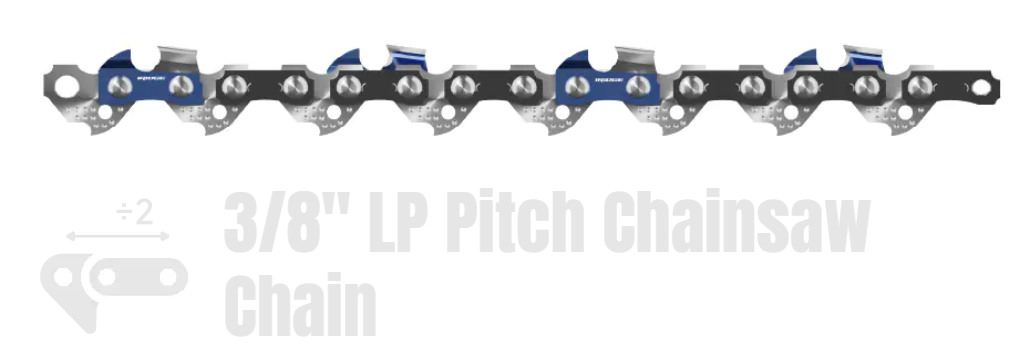The lubrication and maintenance of chainsaw chains are very important for cutting performance. It is not only directly related to the service life of the chain, but also affects the overall working efficiency and safety of the chainsaw. Here are several key aspects of how chain saw chain lubrication and maintenance affect cutting performance:
1. Reduce friction and overheating
The role of lubricants: Lubricants can reduce the friction between the chain and the guide plate, reduce the heat generated by friction, and prevent the chain from becoming blunt or breaking due to overheating. When the chain is constantly rotating during the cutting process, the lack of lubricants will cause direct friction between metal parts, generate excessive heat, and ultimately affect cutting efficiency, and may even cause the chain to melt or deform.
Temperature control: Proper lubricants can help the chain maintain a reasonable temperature during operation and prevent the chain from overheating. Too high a chain temperature will reduce the hardness of the chain, making the cutting effect worse, and even accelerate wear and shorten the service life.
2. Improve cutting efficiency
Reduce resistance: Lubricating oil can effectively reduce the friction between the contact surface of the chain and the wood, thereby reducing the resistance of the chain during cutting, helping the chain to cut into the wood more smoothly and reducing the possibility of chain jamming. This smooth cutting makes the chain saw more efficient when working and reduces the difficulty of operation.
Fine cutting: Good lubrication of the chain not only increases the cutting speed, but also ensures the precision of the cutting. If the lubrication system fails, the sharpness of the chain may decrease rapidly, resulting in uneven or unfine cutting, especially when performing fine cutting tasks (such as gardening pruning or woodworking carving).
3. Extend chain life
Wear protection: Adding lubricating oil between the chain and the guide plate can effectively reduce direct contact between metal and metal and reduce wear. Proper lubrication can delay the passivation of the chain teeth and extend the service life of the chain and guide plate, thereby reducing the cost and trouble of frequent chain replacement.
Anti-corrosion: Chains are prone to rust when exposed to moisture and sawdust for a long time. Proper lubricating oil can form a protective film, reduce direct contact between moisture and air, and prevent rust corrosion, which is especially important when used in a humid environment.
4. Improve chain tension and stability

Reduce wear and relaxation: A chain that lacks proper lubrication will cause excessive wear on the chain teeth and guide plate, thereby changing the tension of the chain. Too loose or too tight chain tension will affect cutting performance and even cause the chain to fall. Good lubrication can reduce the occurrence of these problems and maintain the stability and uniform tension of the chain.
Prevent chain slippage: Lubricating oil not only reduces the friction between the chain and the guide plate, but also prevents the chain from slipping due to overheating or dry friction. Chain slippage not only affects cutting speed, but may also pose a threat to the safety of the operator.
5. Improve work safety
Reduce vibration: Good chain lubrication can reduce the friction between the chain and the guide plate, thereby reducing the vibration generated by the chain saw during operation. Excessive vibration increases operator fatigue, and prolonged operation may cause discomfort or injury. Proper lubrication can effectively relieve vibration and improve operating comfort and safety.
Avoid chain jamming: An important role of chain lubrication is to prevent the chain from jamming during cutting. If the chain is not sufficiently lubricated, friction will increase, and the chain may get stuck in the wood, causing jamming, increasing the difficulty of operation, and may even cause damage to the chain saw.
6. Selection of chain lubricant
Special lubricant: It is very important to choose a lubricant designed specifically for chain saw chains. Special lubricants usually have good adhesion, are not easy to fall off due to high-speed operation, and can maintain a stable lubrication effect during cutting. Non-special oils may evaporate quickly or lose their lubrication effect at high temperatures and cannot provide long-term protection.
Environmentally friendly oils: Nowadays, environmentally friendly chain lubricants are also available on the market. They usually do not contain harmful chemicals, reduce pollution to the environment, and have a good protective effect on the chain and equipment. For those who need to use chain saws in places with high environmental protection requirements (such as gardens, nature reserves, etc.), choosing environmentally friendly lubricants is particularly important.
7. Frequency and method of adding lubricating oil
Timely refueling: Chain lubricating oil should be added in time, especially when the chain saw is used continuously. Generally speaking, the amount of lubricating oil should be checked every time it is used for a period of time (for example, 30 minutes), and refueling should be added as needed. If refueling is not added for a long time, the lubricating effect of the chain will decline rapidly, resulting in performance degradation.
Appropriate amount of refueling: When adding lubricating oil, ensure that the amount of oil is appropriate, not too much or too little. Too much lubricating oil will overflow, which is not only wasteful, but may also pollute the working environment; while too little lubricating oil will cause the chain to lack sufficient lubrication, affecting the cutting effect and increasing wear.
The lubrication and maintenance of the chain saw chain directly affect the cutting performance, chain life, operational safety and work efficiency. By reasonably selecting lubricating oil, refueling in time, and maintaining the appropriate amount of oil, friction can be effectively reduced, temperature can be lowered, cutting efficiency can be improved, and the service life of the chain can be extended. Regular inspection and maintenance of the chain is an important step to ensure that the chain saw can operate efficiently and safely when working.




